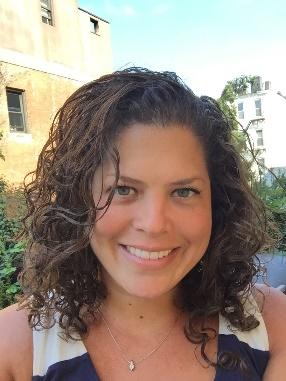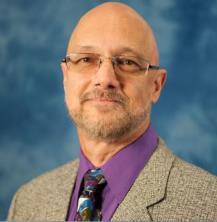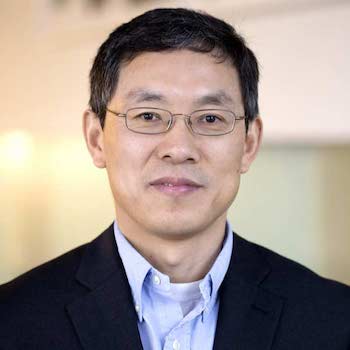The future of long-range space exploration will require on-board nuclear space reactor power, which generates a significant amount of heat. Students on the Northrop Grumman nuclear team will study and design efficient and deployable heat-mitigation devices, enabling long-range human missions, and unlocking the full potential of advanced power and propulsion systems.
Abstract:
The future of space exploration, to include long-range human/science exploration and advanced on-orbit spacecraft that are shielded from sun-facing solar panel power generation, will require on-board nuclear space reactors as their power source. These devices emit a large amount of heat that will need to be managed. The problem is further complicated by the fact that the reactor will need to be separated a finite distance from the spacecraft to reduce radiation effects. Students on the Northrop Grumman team will study thermal management of candidate nuclear space reactors, and design heat-mitigation devices to manage waste heat. This can include deployable booms, advanced materials integration, advanced modeling, and numerous trades for requirements.
Impact:
Nuclear space systems are a foundational technology for maneuverability, survivability, advanced algorithms, and situational awareness. Advanced power and propulsion expand space mission capabilities in the space systems landscape with new mission architectures that are not constrained by available sunlight, or the restrictions of orbital mechanics.
Nuclear space reactors will allow for the elimination of complicated orbital maneuvers to manage solar power generation on complex orbits, such as cislunar, and will support accelerating long-range human space exploration missions where a solar power source is unavailable. Developing more efficient heat rejection management radiators, and the mechanisms to achieve an efficient system, supports this activity.
Scope:
Minimum Viable Product Deliverable (Minimum level of success)
- Comprehensive literature review and technology search of nuclear reactors, their earth-based methods of heat management, and projected adaptability to space applications
- Assessment of baseline heat dissipation techniques with tradeoffs assessed (efficiency, cost, mass, etc.)
- Literature review of open-source use of space-based reactor designs, including an assessment of the business case developed to justify their missions
- Study of candidate NGC spacecraft that can accommodate the size, weight, and power (SWAP), radiation effects, safety, reliability concern,s and other design considerations for a baseline use case mission
- Propose a thermal management and radiator design that covers all phases of reactor operation, from initial start-up to normal operating conditions, and emergency shut down when required
- Ensure the safe operations of the reactor, housed in launch and non-operational status, until it safely leaves Earth orbit
- Complete trade studies for the optimal performance for proposed use cases. Include details of the design that cover all expected environments, performance parameters, and measures of merit
- Perform basic simulation modeling of the system that supports design decision
Expected Final Deliverable (Expected level of success)
- Develop a simple test article that will demonstrate the basic thermodynamics behind the chosen system, and conduct rudimentary modeling and testing to validate the concept
- Minimum viable product radiator design, including deployment mechanism that will either allow for deployment in space, or the use of in-space assembly techniques using the NGC Space Logistics vehicles robotic capabilities to complete the assembly while in orbit
- Detailed-out brief to NGC management, and attendance at a National Conference to discuss results
- Final report to show full systems-level concept development and results of testing, and discussion of what next steps would be for full qualification of the design. The final presentation will be presented at NG Headquarters in Washington D.C. on Thursday, November 16, 2024. (MDP will provide transportation and housing)
Stretch Goal Opportunities: (High level of success)
- Add fidelity to the test article to incorporate more features of the full concept
- Increase knowledge and assessment of the Space Logistics vehicles to bound their capability and limitations
- Study space environments to determine which could have negative impact on the radiator mission (meteorite impact, solar winds, micro gravity, etc.)
- Example HW/SW of the proposed heat management solutions for analysis, and test development prototype.
Nuclear Design (1 Student)
Specific Skills: Domain knowledge specific to nuclear engineering, mechanical design, and thermodynamics
Likely Majors: NERS
Thermodynamics and Fluid Mechanics and Modeling (2-3 Students)
Specific Skills: Heat transfer and Fluids modeling, model development and simulation, validation/optimization with experimental data
Likely Majors: NERS, ME, MSE, ChE, AERO
Mechanical Design and Modeling (2-3 Students)
Specific Skills: Mechanical design, system integration, strong design skills, experimental testing and evaluation.
Likely Majors: ME, SPACE
Additional Desired Skills/Knowledge/Experience
- Excellent, creative problem-solving skills
- An enthusiastic, proactive, hands-on approach to project work
- We highly value experience working on practical engineering teams (If you have engineering competition team experience, in any field, please be sure to highlight this!)
- Contingency planning and execution
- CFD, Thermal or other systems modeling techniques. Indicate any experience on your Experience and Interest Form
- Domain knowledge and/or experience specific to deployables and design for space flight
Sponsor Mentor

Christienne Mancini
Program Manager
Christienne Mancini has been working on large-scale systems from Space Systems, Missile Defense Systems, UAS systems, as well as Submarines and Surface Ships, and has 19 years of full systems engineering life-cycle experience. Christienne Mancini joined Northrop Grumman in 2013, and has held a variety of chief engineer, systems engineering, and management positions. Currently, she is a Program Manager for Northrop Grumman’s Space Systems sector in the Science and Robotics Exploration unit. With Northrop Grumman, Christienne managed projects including Space Systems for DoD and Intel customers, and was the Principal Investigator for several Independent Research and Development (IRADs). Prior to joining Northrop Grumman, Mancini was a Systems Engineer with General Dynamics, engaged in numerous DoD programs. Mancini gained full systems engineering life-cycle experience, from inception through integration, test and delivery of Ballistic Missile Defense (BMD) systems and systems of systems for Missile Defense Agency (MDA).
Mancini attended the University of Cambridge on a Boeing grant as a PhD scholar, and earned an MPhil in Bulk Superconductivity. She also has a bachelor’s degree from Stony Brook University in engineering with a specialization in biomedical and mechanical engineering. She is highly active with outreach, including the Global Science, Technology, Engineering, and Mathematics (STEM), ACP mentorships helping veterans, and enjoys mentoring of young engineering students in Africa.
Executive Mentor

Andy Kwas
NG Fellow/Engineering Systems Architect
Andrew Kwas graduated from the University of Michigan in 1980 with a Master’s degree in Aerospace Engineering. He has 42 years with TRW/NGC, working in advanced projects specializing in on-orbit space products, astrophysics projects, and weapon system developments. In Mr. Kwas’ role as a NG Fellow specializing in space and advanced manufacturing, he supports NASA, AFRL, NRO, DARPA, SMDC, ORSO and the Navy in high tech programs. Mr. Kwas is on the Technical Advisory Board for Cornell, U Michigan, Virginia Tech, Georgia Tech and U New Mexico. He is considered one of the prominent additive manufacturing (AM) experts in the country, and has produced numerous papers in AM, advanced satellite technology, unique logistics solutions, and miniaturization of components. Mr. Kwas is an appointed Research Scholar at the University of New Mexico.
Faculty Mentor

Prof. Xiaodong Sun
Nuclear Engineering and Radiological Sciences
His research interests include thermal-hydraulics and reactor safety, two-phase flow experimentation and modeling, interfacial structure characterization, thermal-hydraulics in advanced high-temperature reactors (gas-cooled, fluoride salt cooled, or liquid metal cooled, and high-temperature compact heat exchangers.
Weekly Meetings: During the winter 2024 semester, the Northrop Grumman Nuclear team will meet on North Campus on Mondays from 3:30 – 5:30 PM.
Work Location: Most of the work will take place on campus in Ann Arbor. The team will travel to present to Northrop Grumman management and attend a National Conference to discuss the results.
Course Substitutions: CE MDE, ChE Elective, EE MDE, CoE Honors, MECHENG 490, MECHENG 590, NERS 499, SI Elective/Cognate
Citizenship Requirements: This project is open to US Citizens or Permanent Residents only, due to the requirement to visit Northrop Grumman.
IP/NDA: Student team members will sign IP/NDA documents that are unique to Northrop Grumman.
Summer Project Activities: No summer activity guaranteed. Internships might be available.
Learn more about the expectations for this type of MDP project
